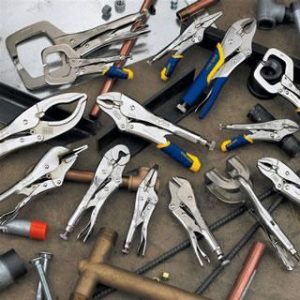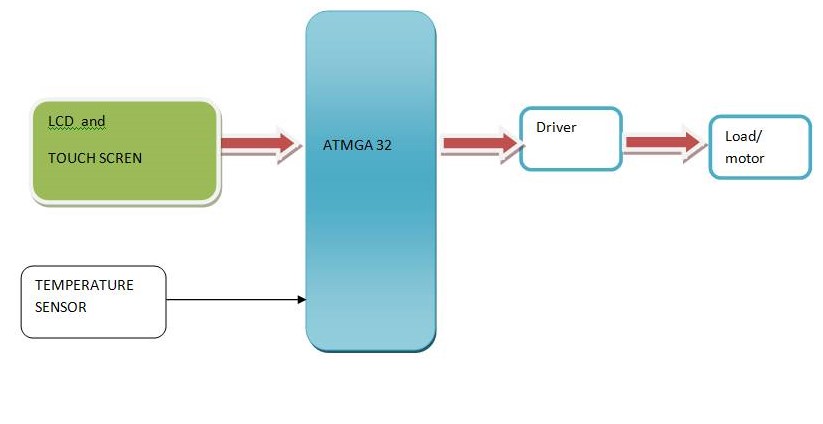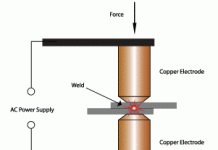SHEET METAL TOOLS
The following tools are commonly used for sheet-metal work:
(i) Hand shears or snips
(ii) Hammers
(iii) Stakes and stake holder
(iv) Cutting tools
(v) Measuring tools
(vi) Miscellaneous hand tools such as chisels, groovers, seamers, rivet sets and hand punches.
Some of the important sheet metal tools are described as under.
1. HAND SHEARS OR SNIPS
Fig shows the types of hand shears or snips. They resemble with pair of scissors and are used like them to cut thin soft metal sheets of 20 gauge or thinner. They are required to size and shape the sheets. They can make straight or circular cuts. Different types of hand shears are:
(1) Straight hand shear:
It is used for general purpose cutting, making straight cuts and trimming away extra metal.
(2) Universal shear:
Its blades are designed for universal cutting straight line or internal and external cutting of contours. It may be of right hand or left hand type, easily identifiable, as the top blade is either on the right of on the left.
(3) Curved hand shear:
It is used for cutting circular or irregular curved shapes ranging from 20 to 35 cm.
2. HAMMERS
Fig shows the various types of hammers used in sheet metal work for forming shapes. The uses of different kind of hammers are given as under:
(a) Smoothing hammer.
Smoothing hammer (Fig.) is used for leveling and smoothing a sheet metal joint.
(b) Stretching hammer.
Stretching hammer (Fig.) is used for stretching sheet.
(c) Creasing hammer.
Creasing hammer (Fig.) is used to close down joint edges of sheets metal part.
(d) Hollowing hammer.
Hollowing hammer (Fig.) is used for hollowing sheet metal part. It is used for generating sharp radii also.
(e) Riveting hammer.
Riveting hammer (Fig.) is used for forming riveted heads.
(f) Planishing hammer.
Planishing hammer (Fig.) is used for removing small marks or indentations from the sheet metal job surface and to true the shape of the work. It smoothens off the finished sheet metal work.
(g) Soft hammer or Mallets.
Mallets (Fig.) used during working with soft metal sheets. They may be of wood, rubber or raw hide. A mallet strikes a blow with the minimum damage to the surface. In sheet metal work, the commonly used mallets are bossing mallet, tinman’s mallet (Fig.) and rawhide mallet (Fig.).
The uses of hammers for some sheet metal operations are depicted through Fig.
3. Stakes
Stakes are used to form the metal sheets into various shapes. It is a sort of anvil, which supports the sheet for sheet metal work. It consists of a shank and a head or horn. The shank of stake is designed to fit into a tapered bench socket. The head or horn of stake is available in a number of varieties of sizes and shapes. Their working faces of stakes are machined or ground to needed shape. With the help of a hammer, operations such as bending, seaming or forming can be easily performed on these stakes. Some stakes are made of forged mild steel faced with cast steel. Whereas the better class stakes are made either of cast iron or cast steel. Fig shows the various types of stakes, which are discussed below:
1. Beak horn stake.
Beak horn (Fig.) is basically used for forming, riveting and seaming articles made of sheet metal part. It is not much suitable like blow horn stake. It has a thick tapered horn at one end and a rectangularly shaped horn at the other.
2. Funnel stake.
Funnel stake (Fig.) is commonly used for planishing tapered work and hand forming of funnels and similar conical shapes of sheet metal.
3. Half moon stake.
Half moon stake (Fig.) is basically used for throwing up edges of curved sheet metal work and for preliminary stages of wiring curved edges.
4. Round bottom stake.
Round bottom stake (Fig.) is commonly used for squaring up edges and setting up the bottom of cylindrical jobs made up of sheets.
5. Bick iron.
Bick iron stake (Fig.) is mainly used for forming taper handles, spouts and tubular work in general. The narrow flat anvil end of bick iron is very useful on rectangular work.
6. Hatchet stake.
Hatchet stake (Fig.) is generally used for making sharp bends, bending edges and forming boxes and pans of sheet metal by hand. This stake has a sharp straight edge beveled along one side.
7. Creasing with horn stake.
Creasing horn stake (Fig.) has a round horn used for forming conical shaped pieces in sheets. The other end has a tapering square horn with grooved slots for wiring and beading.
8. Needle case stake.
Needle case stake (Fig.) is generally used for bending of sheets. It has a round slender horn for forming wire rings and tubes.
9. Candle mold stake.
Candle mold stake (Fig.) has two horns for different tapers when forming, seaming and riveting long flaring articles made up of sheet metal.
10. Blow horn stake.
Blow horn stake (Fig.) is generally used in forming, riveting and seaming tapered articles such as funnels.
11. Conductor stake.
Conductor stake (Fig.) has two cylindrical horns of different diameters. It is used for forming, riveting, and seaming small sized pipes and tubes.
12. Double seaming stake.
Double seaming stake (Fig.) consists of two cylindrical horns of different diameters and it is commonly used for riveting forming, and seaming tubes and small pipes.
4. Stake Holder
Fig shows the stake holder, which is a rectangular cast iron plate that has conveniently arranged tapered holes so that the various stakes may fit in and may be used in different positions for tackling the sheet metal job for a particular work.
5. Cutting Tools
Sheet metal shop uses cutting tools, which are described in detail in the chapter 19 pertaining to fitting work along with relevant figures. Commonly used cutting tools involve types of files, chisels, scraper and hacksaws. Some of the commonly used cutting tools are discussed as under.
1. Files.
These are flat, square, round, triangular, knife, pillar, needle and mill types.
2. Chisels.
The flat chisel and round nose chisel are most widely used in sheet metal work.
3. Scrapers.
These are flat, hook; triangular, half round types.
4. Hacksaws.
Hacksaw used in sheet metal shop may be hand hacksaw or power hacksaw.
Source A Textbook of Basic Manufacturing Processes and Workshop Technology by Rajender Singh.















